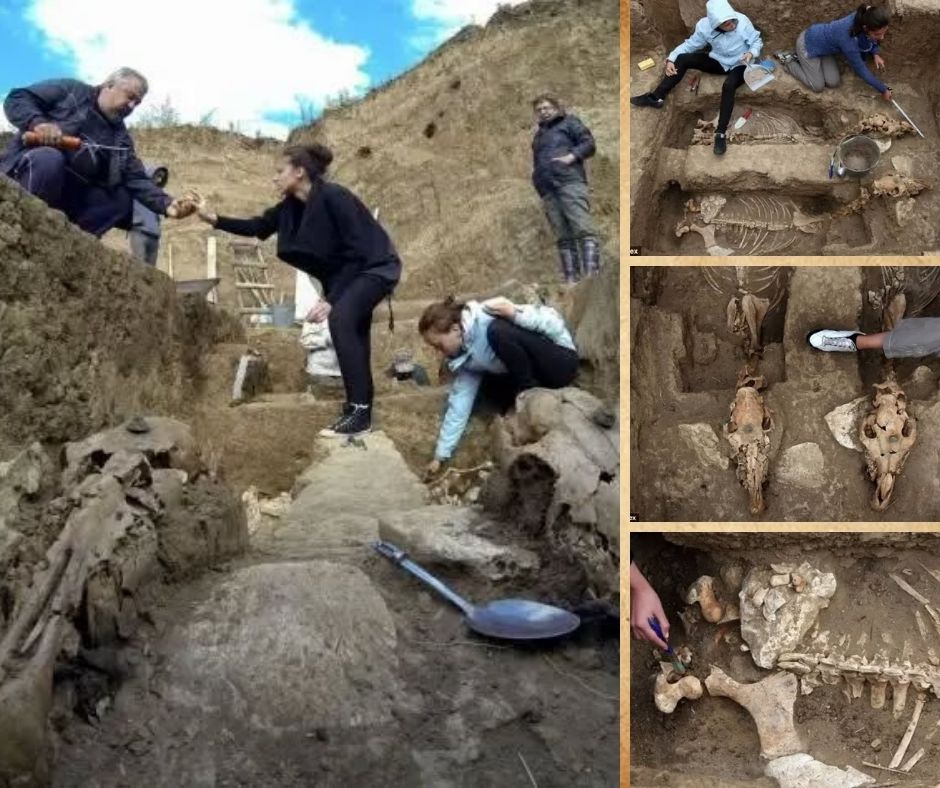Uncovering the secrets of the past as researchers delve into the mystery of the 2,500-year-old horse remains found in Bulgaria, hinting at a fascinating burial practice.

Archaeologists in the village of Svestari, northeastern Bulgaria, have uncovered an exceptional find: a well-preserved Thracian chariot along with the remains of two horses buried upright. This discovery, led by Professor Diana Gergova from the National Archaeology Institute, dates back 2,500 years and is situated in a Thracian tomb associated with nobility, near the previously excavated Mound of Bulgarian Khan Imurtag.
The chariot, featuring two wheels, a seat, and a boot, was discovered in a narrow pit designed for the horses, which were adorned with intricate harnesses. Evidence suggests the horses were killed while still attached to the chariot, as indicated by metal disks found on their heads.
This finding is remarkable, especially considering that many ancient mounds in the area have been ravaged by treasure hunters, despite UNESCO protections. Gergova highlighted the uniqueness of this chariot, which differs from any previously found in Bulgaria.
This discovery not only sheds light on Thracian burial practices, but also provides insights into the material culture and beliefs of this warrior society, known from historical texts as allies of the Trojans in the Trojan War.

